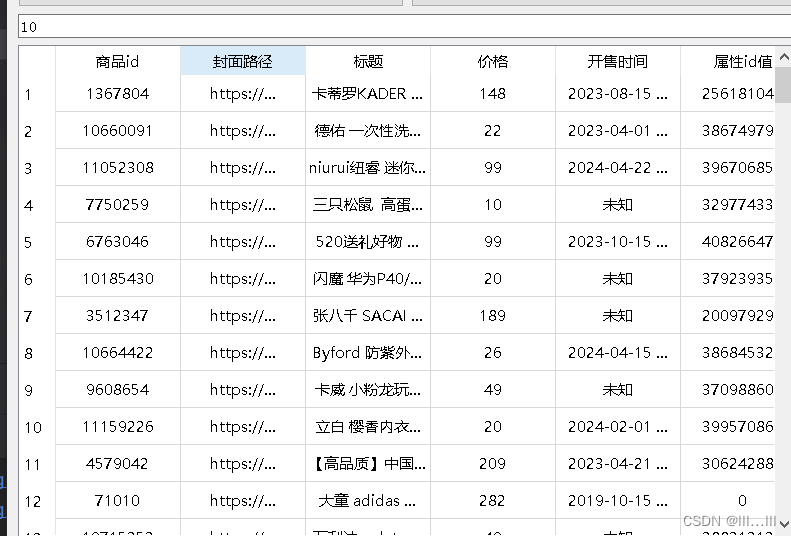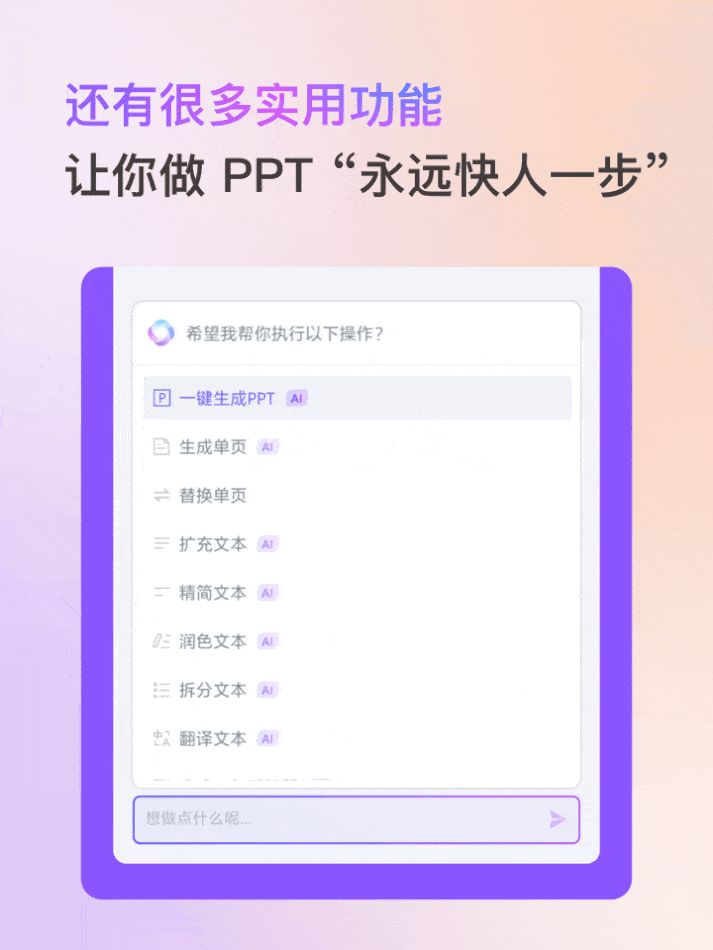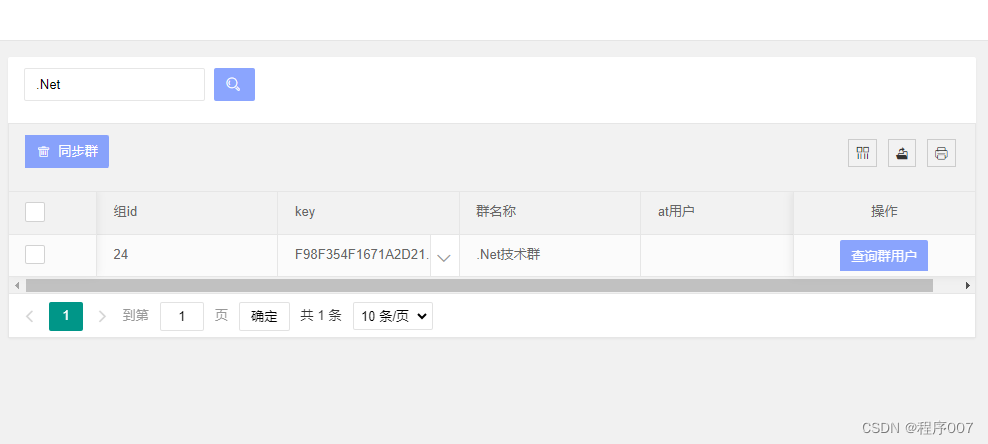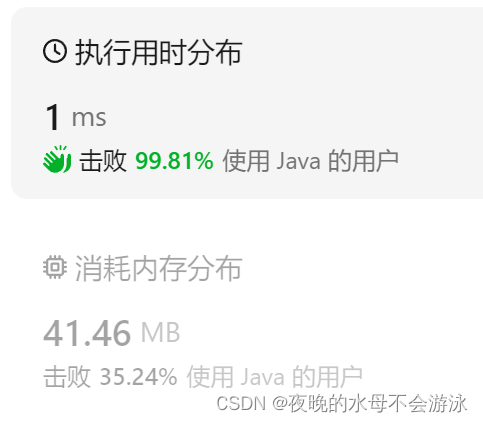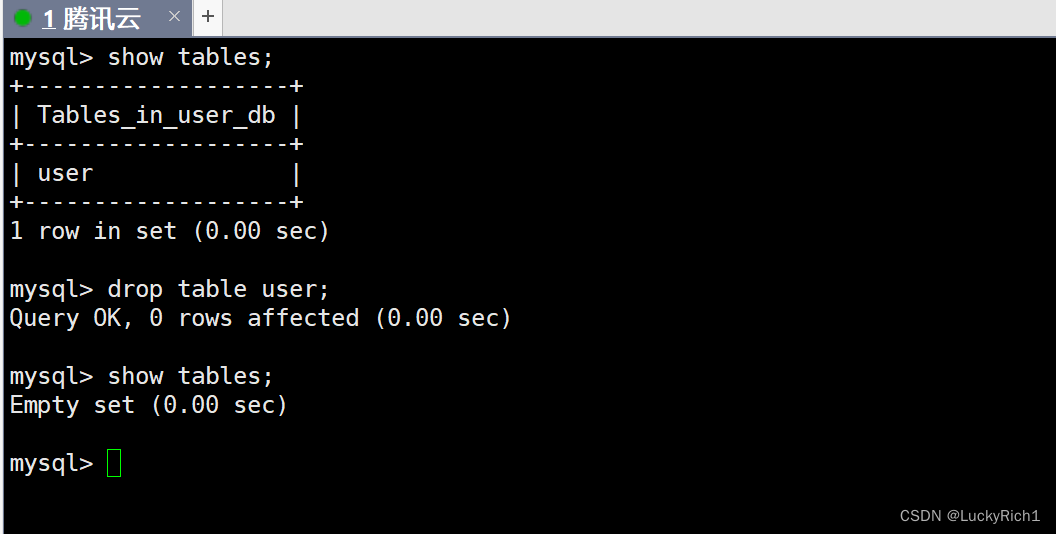day16——集合进阶(Set、Map集合)
一、Set系列集合
1.1 认识Set集合的特点
Set集合是属于Collection体系下的另一个分支,它的特点如下图所示

下面我们用代码简单演示一下,每一种Set集合的特点。
//Set<Integer> set = new HashSet<>(); //无序、无索引、不重复
//Set<Integer> set = new LinkedHashSet<>(); //有序、无索引、不重复
Set<Integer> set = new TreeSet<>(); //可排序(升序)、无索引、不重复
set.add(666);
set.add(555);
set.add(555);
set.add(888);
set.add(888);
set.add(777);
set.add(777);
System.out.println(set); //[555, 666, 777, 888]
1.2 HashSet集合底层原理
接下来,为了让同学们更加透彻的理解HashSet为什么可以去重,我们来看一下它的底层原理。
HashSet集合底层是基于哈希表实现的,哈希表根据JDK版本的不同,也是有点区别的
- JDK8以前:哈希表 = 数组+链表
- JDK8以后:哈希表 = 数组+链表+红黑树

我们发现往HashSet集合中存储元素时,底层调用了元素的两个方法:一个是hashCode方法获取元素的hashCode值(哈希值);另一个是调用了元素的equals方法,用来比较新添加的元素和集合中已有的元素是否相同。
- 只有新添加元素的hashCode值和集合中以后元素的hashCode值相同、新添加的元素调用equals方法和集合中已有元素比较结果为true, 才认为元素重复。
- 如果hashCode值相同,equals比较不同,则以链表的形式连接在数组的同一个索引为位置(如上图所示)
在JDK8开始后,为了提高性能,当链表的长度超过8时,就会把链表转换为红黑树,如下图所示:

1.3 HashSet去重原理
前面我们学习了HashSet存储元素的原理,依赖于两个方法:一个是hashCode方法用来确定在底层数组中存储的位置,另一个是用equals方法判断新添加的元素是否和集合中已有的元素相同。
要想保证在HashSet集合中没有重复元素,我们需要重写元素类的hashCode和equals方法。比如以下面的Student类为例,假设把Student类的对象作为HashSet集合的元素,想要让学生的姓名和年龄相同,就认为元素重复。
public class Student{private String name; //姓名private int age; //年龄private double height; //身高//无参数构造方法public Student(){}//全参数构造方法public Student(String name, int age, double height){this.name=name;this.age=age;this.height=height;}//...get、set、toString()方法自己补上..//按快捷键生成hashCode和equals方法//alt+insert 选择 hashCode and equals@Overridepublic boolean equals(Object o) {if (this == o) return true;if (o == null || getClass() != o.getClass()) return false;Student student = (Student) o;if (age != student.age) return false;if (Double.compare(student.height, height) != 0) return false;return name != null ? name.equals(student.name) : student.name == null;}@Overridepublic int hashCode() {int result;long temp;result = name != null ? name.hashCode() : 0;result = 31 * result + age;temp = Double.doubleToLongBits(height);result = 31 * result + (int) (temp ^ (temp >>> 32));return result;}
}
接着,写一个测试类,往HashSet集合中存储Student对象。
public class Test{public static void main(String[] args){Set<Student> students = new HashSet<>();Student s1 = new Student("至尊宝",20, 169.6);Student s2 = new Student("蜘蛛精",23, 169.6);Student s3 = new Student("蜘蛛精",23, 169.6);Student s4 = new Student("牛魔王",48, 169.6);students.add(s1);students.add(s2);students.add(s3);students.add(s4);for(Student s : students){System.out.println(s);}}
}
打印结果如下,我们发现存了两个蜘蛛精,当时实际打印出来只有一个,而且是无序的。
Student{name='牛魔王', age=48, height=169.6}
Student{name='至尊宝', age=20, height=169.6}
Student{name='蜘蛛精', age=23, height=169.6}
1.4 LinkedHashSet底层原理
接下来,我们再学习一个HashSet的子类LinkedHashSet类。LinkedHashSet它底层采用的是也是哈希表结构,只不过额外新增了一个双向链表来维护元素的存取顺序。如下下图所示:

每次添加元素,就和上一个元素用双向链表连接一下。第一个添加的元素是双向链表的头节点,最后一个添加的元素是双向链表的尾节点。
把上个案例中的集合改成LinkedList集合,我们观察效果怎样
public class Test{public static void main(String[] args){Set<Student> students = new LinkedHashSet<>();Student s1 = new Student("至尊宝",20, 169.6);Student s2 = new Student("蜘蛛精",23, 169.6);Student s3 = new Student("蜘蛛精",23, 169.6);Student s4 = new Student("牛魔王",48, 169.6);students.add(s1);students.add(s2);students.add(s3);students.add(s4);for(Student s : students){System.out.println(s);}}
}
打印结果如下
Student{name='至尊宝', age=20, height=169.6}
Student{name='蜘蛛精', age=23, height=169.6}
Student{name='牛魔王', age=48, height=169.6}
1.5 TreeSet集合
最后,我们学习一下TreeSet集合。TreeSet集合的特点是可以对元素进行排序,但是必须指定元素的排序规则。
如果往集合中存储String类型的元素,或者Integer类型的元素,它们本身就具备排序规则,所以直接就可以排序。
Set<Integer> set1= new TreeSet<>();
set1.add(8);
set1.add(6);
set1.add(4);
set1.add(3);
set1.add(7);
set1.add(1);
set1.add(5);
set1.add(2);
System.out.println(set1); //[1,2,3,4,5,6,7,8]Set<Integer> set2= new TreeSet<>();
set2.add("a");
set2.add("c");
set2.add("e");
set2.add("b");
set2.add("d");
set2.add("f");
set2.add("g");
System.out.println(set1); //[a,b,c,d,e,f,g]
如果往TreeSet集合中存储自定义类型的元素,比如说Student类型,则需要我们自己指定排序规则,否则会出现异常。
//创建TreeSet集合,元素为Student类型
Set<Student> students = new TreeSet<>();//创建4个Student对象
Student s1 = new Student("至尊宝",20, 169.6);
Student s2 = new Student("紫霞",23, 169.8);
Student s3 = new Student("蜘蛛精",23, 169.6);
Student s4 = new Student("牛魔王",48, 169.6);//添加Studnet对象到集合
students.add(s1);
students.add(s2);
students.add(s3);
students.add(s4);
System.out.println(students);
此时运行代码,会直接报错。原因是TreeSet不知道按照什么条件对Student对象来排序。

我们想要告诉TreeSet集合按照指定的规则排序,有两种办法:
第一种:让元素的类实现Comparable接口,重写compareTo方法
第二种:在创建TreeSet集合时,通过构造方法传递Compartor比较器对象
- **排序方式1:**我们先来演示第一种排序方式
//第一步:先让Student类,实现Comparable接口
//注意:Student类的对象是作为TreeSet集合的元素的
public class Student implements Comparable<Student>{private String name;private int age;private double height;//无参数构造方法public Student(){}//全参数构造方法public Student(String name, int age, double height){this.name=name;this.age=age;this.height=height;}//...get、set、toString()方法自己补上..//第二步:重写compareTo方法//按照年龄进行比较,只需要在方法中让this.age和o.age相减就可以。/*原理:在往TreeSet集合中添加元素时,add方法底层会调用compareTo方法,根据该方法的结果是正数、负数、还是零,决定元素放在后面、前面还是不存。*/@Overridepublic int compareTo(Student o) {//this:表示将要添加进去的Student对象//o: 表示集合中已有的Student对象return this.age-o.age;}
}
此时,再运行测试类,结果如下
Student{name='至尊宝', age=20, height=169.6}
Student{name='紫霞', age=20, height=169.8}
Student{name='蜘蛛精', age=23, height=169.6}
Student{name='牛魔王', age=48, height=169.6}
- **排序方式2:**接下来演示第二种排序方式
//创建TreeSet集合时,传递比较器对象排序
/*
原理:当调用add方法时,底层会先用比较器,根据Comparator的compare方是正数、负数、还是零,决定谁在后,谁在前,谁不存。
*/
//下面代码中是按照学生的年龄升序排序
Set<Student> students = new TreeSet<>(new Comparator<Student>{@Overridepublic int compare(Student o1, Student o2){//需求:按照学生的身高排序return Double.compare(o1,o2); }
});//创建4个Student对象
Student s1 = new Student("至尊宝",20, 169.6);
Student s2 = new Student("紫霞",23, 169.8);
Student s3 = new Student("蜘蛛精",23, 169.6);
Student s4 = new Student("牛魔王",48, 169.6);//添加Studnet对象到集合
students.add(s1);
students.add(s2);
students.add(s3);
students.add(s4);
System.out.println(students);
1.6 总结Collection集合
最后,将所有的Collection集合总结一下,要求大家掌握每一种集合的特点,以及他们的体系结构。

好了,关于Collection集合,到这里就学习完了。
1.7 并发修改异常
学完Collection集合后,还有一个小问题需要给同学们补充说明一下,那就是在使用迭代器遍历集合时,可能存在并发修改异常。
我们先把这个异常用代码演示出来,再解释一下为什么会有这个异常产生
List<String> list = new ArrayList<>();
list.add("王麻子");
list.add("小李子");
list.add("李爱花");
list.add("张全蛋");
list.add("晓李");
list.add("李玉刚");
System.out.println(list); // [王麻子, 小李子, 李爱花, 张全蛋, 晓李, 李玉刚]//需求:找出集合中带"李"字的姓名,并从集合中删除
Iterator<String> it = list.iterator();
while(it.hasNext()){String name = it.next();if(name.contains("李")){list.remove(name);}
}
System.out.println(list);
运行上面的代码,会出现下面的异常。这就是并发修改异常

为什么会出现这个异常呢?那是因为迭代器遍历机制,规定迭代器遍历集合的同时,不允许集合自己去增删元素,否则就会出现这个异常。
怎么解决这个问题呢?不使用集合的删除方法,而是使用迭代器的删除方法,代码如下:
List<String> list = new ArrayList<>();
list.add("王麻子");
list.add("小李子");
list.add("李爱花");
list.add("张全蛋");
list.add("晓李");
list.add("李玉刚");
System.out.println(list); // [王麻子, 小李子, 李爱花, 张全蛋, 晓李, 李玉刚]//需求:找出集合中带"李"字的姓名,并从集合中删除
Iterator<String> it = list.iterator();
while(it.hasNext()){String name = it.next();if(name.contains("李")){//list.remove(name);it.remove(); //当前迭代器指向谁,就删除谁}
}
System.out.println(list);
二、Collection的其他操作
各位同学,前面我们已经把Collection家族的集合都学习完了。为了更加方便的对Collection集合进行操作,今天我们还要学习一个操作Collection集合的工具类,叫做Collections。但是Collections工具类中需要用到一个没有学过的小知识点,叫做可变参数,所以必须先学习这个前置知识可变参数,再学习Collections工具类,最后再利用这个工具类做一个综合案例。
2.1 可变参数
首先,我们来学习一下可变参数。关于可变参数我们首先要知道它是什么,然后要知道它的本质。搞清楚这两个问题,可变参数就算你学明白了。
可变参数是一种特殊的形式参数,定义在方法、构造器的形参列表处,它可以让方法接收多个同类型的实际参数。
可变参数在方法内部,本质上是一个数组
接下来,我们编写代码来演示一下
public class ParamTest{public static void main(String[] args){//不传递参数,下面的nums长度则为0, 打印元素是[]test(); //传递3个参数,下面的nums长度为3,打印元素是[10, 20, 30]test(10,20,30); //传递一个数组,下面数组长度为4,打印元素是[10,20,30,40] int[] arr = new int[]{10,20,30,40}test(arr); }public static void test(int...nums){//可变参数在方法内部,本质上是一个数组System.out.println(nums.length);System.out.println(Arrays.toString(nums));System.out.println("----------------");}
}
最后还有一些错误写法,需要让大家写代码时注意一下,不要这么写哦!!!
一个形参列表中,只能有一个可变参数;否则会报错
一个形参列表中如果多个参数,可变参数需要写在最后;否则会报错


2.2 Collections工具类
有了可变参数的基础,我们再学习Collections这个工具类就好理解了,因为这个工具类的方法中会用到可变参数。
注意Collections并不是集合,它比Collection多了一个s,一般后缀为s的类很多都是工具类。这里的Collections是用来操作Collection的工具类。它提供了一些好用的静态方法,如下

我们把这些方法用代码来演示一下:
public class CollectionsTest{public static void main(String[] args){//1.public static <T> boolean addAll(Collection<? super T> c, T...e)List<String> names = new ArrayList<>();Collections.addAll(names, "张三","王五","李四", "张麻子");System.out.println(names);//2.public static void shuffle(List<?> list):对集合打乱顺序Collections.shuffle(names);System.out.println(names);//3.public static <T> void short(List<T list): 对List集合排序List<Integer> list = new ArrayList<>();list.add(3);list.add(5);list.add(2);Collections.sort(list);System.out.println(list);}
}
上面我们往集合中存储的元素要么是Stirng类型,要么是Integer类型,他们本来就有一种自然顺序所以可以直接排序。但是如果我们往List集合中存储Student对象,这个时候想要对List集合进行排序自定义比较规则的。指定排序规则有两种方式,如下:
排序方式1:让元素实现Comparable接口,重写compareTo方法
比如现在想要往集合中存储Studdent对象,首先需要准备一个Student类,实现Comparable接口。
public class Student implements Comparable<Student>{private String name;private int age;private double height;//排序时:底层会自动调用此方法,this和o表示需要比较的两个对象@Overridepublic int compareTo(Student o){//需求:按照年龄升序排序//如果返回正数:说明左边对象的年龄>右边对象的年龄//如果返回负数:说明左边对象的年龄<右边对象的年龄,//如果返回0:说明左边对象的年龄和右边对象的年龄相同return this.age - o.age;}//...getter、setter、constructor..
}
然后再使用Collections.sort(list集合)对List集合排序,如下:
//3.public static <T> void short(List<T list): 对List集合排序
List<Student> students = new ArrayList<>();
students.add(new Student("蜘蛛精",23,169.7));
students.add(new Student("紫霞",22,169.8));
students.add(new Student("紫霞",22,169.8));
students.add(new Student("至尊宝",26,169.5));/*
原理:sort方法底层会遍历students集合中的每一个元素,采用排序算法,将任意两个元素两两比较;每次比较时,会用一个Student对象调用compareTo方法和另一个Student对象进行比较;根据compareTo方法返回的结果是正数、负数,零来决定谁大,谁小,谁相等,重新排序元素的位置注意:这些都是sort方法底层自动完成的,想要完全理解,必须要懂排序算法才行;
*/
Collections.sort(students);
System.out.println(students);
排序方式2:使用调用sort方法是,传递比较器
/*
原理:sort方法底层会遍历students集合中的每一个元素,采用排序算法,将任意两个元素两两比较;每次比较,会将比较的两个元素传递给Comparator比较器对象的compare方法的两个参数o1和o2,根据compare方法的返回结果是正数,负数,或者0来决定谁大,谁小,谁相等,重新排序元素的位置注意:这些都是sort方法底层自动完成的,不需要我们完全理解,想要理解它必须要懂排序算法才行.
*/
Collections.sort(students, new Comparator<Student>(){@Overridepublic int compare(Student o1, Student o2){return o1.getAge()-o2.getAge();}
});
System.out.println(students);
2.3 斗地主案例

我们先分析一下业务需求:
- 总共有54张牌,每一张牌有花色和点数两个属性、为了排序还可以再加一个序号
- 点数可以是:
“3”,"4","5","6","7","8","9","10","J","Q","K","A","2" - 花色可以是:
“♣”,"♠","♥","♦" - 斗地主时:三个玩家没人手里17张牌,剩余3张牌作为底牌
第一步:为了表示每一张牌有哪些属性,首先应该新建一个扑克牌的类
第二步:启动游戏时,就应该提前准备好54张牌
第三步:接着再完全洗牌、发牌、捋牌、看牌的业务逻辑
先来完成第一步,定义一个扑克类Card
public class Card {private String number;private String color;// 每张牌是存在大小的。private int size; // 0 1 2 ....public Card() {}public Card(String number, String color, int size) {this.number = number;this.color = color;this.size = size;}public String getNumber() {return number;}public void setNumber(String number) {this.number = number;}public String getColor() {return color;}public void setColor(String color) {this.color = color;}public int getSize() {return size;}public void setSize(int size) {this.size = size;}@Overridepublic String toString() {return color + number ;}
}
再完成第二步,定义一个房间类,初始化房间时准备好54张牌
public class Room {// 必须有一副牌。private List<Card> allCards = new ArrayList<>();public Room(){// 1、做出54张牌,存入到集合allCards// a、点数:个数确定了,类型确定。String[] numbers = {"3","4","5","6","7","8","9","10","J","Q","K","A","2"};// b、花色:个数确定了,类型确定。String[] colors = {"♠", "♥", "♣", "♦"};int size = 0; // 表示每张牌的大小// c、遍历点数,再遍历花色,组织牌for (String number : numbers) {// number = "3"size++; // 1 2 ....for (String color : colors) {// 得到一张牌Card c = new Card(number, color, size);allCards.add(c); // 存入了牌}}// 单独存入小大王的。Card c1 = new Card("", "🃏" , ++size);Card c2 = new Card("", "👲" , ++size);Collections.addAll(allCards, c1, c2);System.out.println("新牌:" + allCards);}
}
最后完成第三步,定义一个启动游戏的方法,完成洗牌、发牌、捋牌、看牌的业务逻辑
/**
* 游戏启动
*/
public void start() {// 1、洗牌: allCardsCollections.shuffle(allCards);System.out.println("洗牌后:" + allCards);// 2、发牌,首先肯定要定义 三个玩家。 List(ArrayList) Set(TreeSet)List<Card> linHuChong = new ArrayList<>();List<Card> jiuMoZhi = new ArrayList<>();List<Card> renYingYing = new ArrayList<>();// 正式发牌给这三个玩家,依次发出51张牌,剩余3张做为底牌。// allCards = [♥3, ♣10, ♣4, ♥K, ♦Q, ♣2, 🃏, ♣8, ....// 0 1 2 3 4 5 6 ... % 3for (int i = 0; i < allCards.size() - 3; i++) {Card c = allCards.get(i);// 判断牌发给谁if(i % 3 == 0){// 请啊冲接牌linHuChong.add(c);}else if(i % 3 == 1){// 请啊鸠来接牌jiuMoZhi.add(c);}else if(i % 3 == 2){// 请盈盈接牌renYingYing.add(c);}}// 3、对3个玩家的牌进行排序sortCards(linHuChong);sortCards(jiuMoZhi);sortCards(renYingYing);// 4、看牌System.out.println("啊冲:" + linHuChong);System.out.println("啊鸠:" + jiuMoZhi);System.out.println("盈盈:" + renYingYing);List<Card> lastThreeCards = allCards.subList(allCards.size() - 3, allCards.size()); // 51 52 53System.out.println("底牌:" + lastThreeCards);jiuMoZhi.addAll(lastThreeCards);sortCards(jiuMoZhi);System.out.println("啊鸠抢到地主后:" + jiuMoZhi);
}/*** 集中进行排序* @param cards*/
private void sortCards(List<Card> cards) {Collections.sort(cards, new Comparator<Card>() {@Overridepublic int compare(Card o1, Card o2) {// return o1.getSize() - o2.getSize(); // 升序排序return o2.getSize() - o1.getSize(); // 降序排序}});
}
不要忘记了写测试类了,
public class GameDemo {public static void main(String[] args) {// 1、牌类。// 2、房间Room m = new Room();// 3、启动游戏m.start();}
}
三、Map集合
3.1 Map概述体系
各位同学,前面我们已经把单列集合学习完了,接下来我们要学习的是双列集合。首先我们还是先认识一下什么是双列集合。
所谓双列集合,就是说集合中的元素是一对一对的。Map集合中的每一个元素是以key=value的形式存在的,一个key=value就称之为一个键值对,而且在Java中有一个类叫Entry类,Entry的对象用来表示键值对对象。
所有的Map集合有如下的特点:键不能重复,值可以重复,每一个键只能找到自己对应的值。

下面我们先写一个Map集合,保存几个键值对,体验一下Map集合的特点
public class MapTest1 {public static void main(String[] args) {// Map<String, Integer> map = new HashMap<>(); // 一行经典代码。 按照键 无序,不重复,无索引。Map<String, Integer> map = new LinkedHashMap<>(); // 有序,不重复,无索引。map.put("手表", 100);map.put("手表", 220); // 后面重复的数据会覆盖前面的数据(键)map.put("手机", 2);map.put("Java", 2);map.put(null, null);System.out.println(map);Map<Integer, String> map1 = new TreeMap<>(); // 可排序,不重复,无索引map1.put(23, "Java");map1.put(23, "MySQL");map1.put(19, "李四");map1.put(20, "王五");System.out.println(map1);}
}
Map集合也有很多种,在Java中使用不同的类来表示的,每一种Map集合其键的特点是有些差异的,值是键的一个附属值,所以我们只关注键的特点就可以了。

关于Map集合是什么,以及Map集合的体系我们先了解到这里,接下来就具体学习一下Map集合的通用方法。
3.2 Map集合的常用方法
各位同学,上节课我们已经认识了Map集合,接下来我们学习一下Map集合提供了那些方法供我们使用。由于Map是所有双列集合的父接口,所以我们只需要学习Map接口中每一个方法是什么含义,那么所有的Map集合方法你就都会用了。

public class MapTest2 {public static void main(String[] args) {// 1.添加元素: 无序,不重复,无索引。Map<String, Integer> map = new HashMap<>();map.put("手表", 100);map.put("手表", 220);map.put("手机", 2);map.put("Java", 2);map.put(null, null);System.out.println(map);// map = {null=null, 手表=220, Java=2, 手机=2}// 2.public int size():获取集合的大小System.out.println(map.size());// 3、public void clear():清空集合//map.clear();//System.out.println(map);// 4.public boolean isEmpty(): 判断集合是否为空,为空返回true ,反之!System.out.println(map.isEmpty());// 5.public V get(Object key):根据键获取对应值int v1 = map.get("手表");System.out.println(v1);System.out.println(map.get("手机")); // 2System.out.println(map.get("张三")); // null// 6. public V remove(Object key):根据键删除整个元素(删除键会返回键的值)System.out.println(map.remove("手表"));System.out.println(map);// 7.public boolean containsKey(Object key): 判断是否包含某个键 ,包含返回true ,反之System.out.println(map.containsKey("手表")); // falseSystem.out.println(map.containsKey("手机")); // trueSystem.out.println(map.containsKey("java")); // falseSystem.out.println(map.containsKey("Java")); // true// 8.public boolean containsValue(Object value): 判断是否包含某个值。System.out.println(map.containsValue(2)); // trueSystem.out.println(map.containsValue("2")); // false// 9.public Set<K> keySet(): 获取Map集合的全部键。Set<String> keys = map.keySet();System.out.println(keys);// 10.public Collection<V> values(); 获取Map集合的全部值。Collection<Integer> values = map.values();System.out.println(values);// 11.把其他Map集合的数据倒入到自己集合中来。(拓展)Map<String, Integer> map1 = new HashMap<>();map1.put("java1", 10);map1.put("java2", 20);Map<String, Integer> map2 = new HashMap<>();map2.put("java3", 10);map2.put("java2", 222);map1.putAll(map2); // putAll:把map2集合中的元素全部倒入一份到map1集合中去。System.out.println(map1);System.out.println(map2);}
}
3.3 Map集合遍历方式1
Map集合一共有三种遍历方式,我们先来学习第一种,他需要用到下面的两个方法

/*** 目标:掌握Map集合的遍历方式1:键找值*/
public class MapTest1 {public static void main(String[] args) {// 准备一个Map集合。Map<String, Double> map = new HashMap<>();map.put("蜘蛛精", 162.5);map.put("蜘蛛精", 169.8);map.put("紫霞", 165.8);map.put("至尊宝", 169.5);map.put("牛魔王", 183.6);System.out.println(map);// map = {蜘蛛精=169.8, 牛魔王=183.6, 至尊宝=169.5, 紫霞=165.8}// 1、获取Map集合的全部键Set<String> keys = map.keySet();// System.out.println(keys);// [蜘蛛精, 牛魔王, 至尊宝, 紫霞]// key// 2、遍历全部的键,根据键获取其对应的值for (String key : keys) {// 根据键获取对应的值double value = map.get(key);System.out.println(key + "=====>" + value);}}
}
3.4 Map集合遍历方式2
各位同学,接下来我们学习Map集合的第二种遍历方式,这种遍历方式更加符合面向对象的思维。
前面我们给大家介绍过,Map集合是用来存储键值对的,而每一个键值对实际上是一个Entry对象。
这里Map集合的第二种方式,是直接获取每一个Entry对象,把Entry存储扫Set集合中去,再通过Entry对象获取键和值。

/*** 目标:掌握Map集合的第二种遍历方式:键值对。*/
public class MapTest2 {public static void main(String[] args) {Map<String, Double> map = new HashMap<>();map.put("蜘蛛精", 169.8);map.put("紫霞", 165.8);map.put("至尊宝", 169.5);map.put("牛魔王", 183.6);System.out.println(map);// map = {蜘蛛精=169.8, 牛魔王=183.6, 至尊宝=169.5, 紫霞=165.8}// entries = [(蜘蛛精=169.8), (牛魔王=183.6), (至尊宝=169.5), (紫霞=165.8)]// entry = (蜘蛛精=169.8)// entry = (牛魔王=183.6)// ...// 1、调用Map集合提供entrySet方法,把Map集合转换成键值对类型的Set集合Set<Map.Entry<String, Double>> entries = map.entrySet();for (Map.Entry<String, Double> entry : entries) {String key = entry.getKey();double value = entry.getValue();System.out.println(key + "---->" + value);}}
}
3.5 Map集合遍历方式3
Map集合的第三种遍历方式,需要用到下面的一个方法forEach,而这个方法是JDK8版本以后才有的。调用起来非常简单,最好是结合的lambda表达式一起使用。

/*** 目标:掌握Map集合的第二种遍历方式:键值对。*/
public class MapTest3 {public static void main(String[] args) {Map<String, Double> map = new HashMap<>();map.put("蜘蛛精", 169.8);map.put("紫霞", 165.8);map.put("至尊宝", 169.5);map.put("牛魔王", 183.6);System.out.println(map);// map = {蜘蛛精=169.8, 牛魔王=183.6, 至尊宝=169.5, 紫霞=165.8}//遍历map集合,传递匿名内部类map.forEach(new BiConsumer<String, Double>() {@Overridepublic void accept(String k, Double v) {System.out.println(k + "---->" + v);}});//遍历map集合,传递Lambda表达式map.forEach(( k, v) -> {System.out.println(k + "---->" + v);});}
}
3.6 Map集合案例
学习完Map集合的基本用法之后,接下来我们做一个综合案例,将Map集合运用一下。

先分析需求,再考虑怎么用代码实现
1.首先可以将80个学生选择的景点放到一个集合中去(也就是说,集合中的元素是80个任意的ABCD元素)
2.准备一个Map集合用来存储景点,以及景点被选择的次数
3.遍历80个学生选择景点的集合,得到每一个景点,判断Map集合中是否包含该景点如果不包含,则存储"景点=1"如果包含,则存获取该景点原先的值,再存储"景点=原来的值+1"; 此时新值会覆盖旧值
/*** 目标:完成Map集合的案例:统计投票人数。*/
public class MapDemo4 {public static void main(String[] args) {// 1、把80个学生选择的景点数据拿到程序中来。List<String> data = new ArrayList<>();String[] selects = {"A", "B", "C", "D"};Random r = new Random();for (int i = 1; i <= 80; i++) {// 每次模拟一个学生选择一个景点,存入到集合中去。int index = r.nextInt(4); // 0 1 2 3data.add(selects[index]);}System.out.println(data);// 2、开始统计每个景点的投票人数// 准备一个Map集合用于统计最终的结果Map<String, Integer> result = new HashMap<>();// 3、开始遍历80个景点数据for (String s : data) {// 问问Map集合中是否存在该景点if(result.containsKey(s)){// 说明这个景点之前统计过。其值+1. 存入到Map集合中去result.put(s, result.get(s) + 1);}else {// 说明这个景点是第一次统计,存入"景点=1"result.put(s, 1);}}System.out.println(result);}
}
